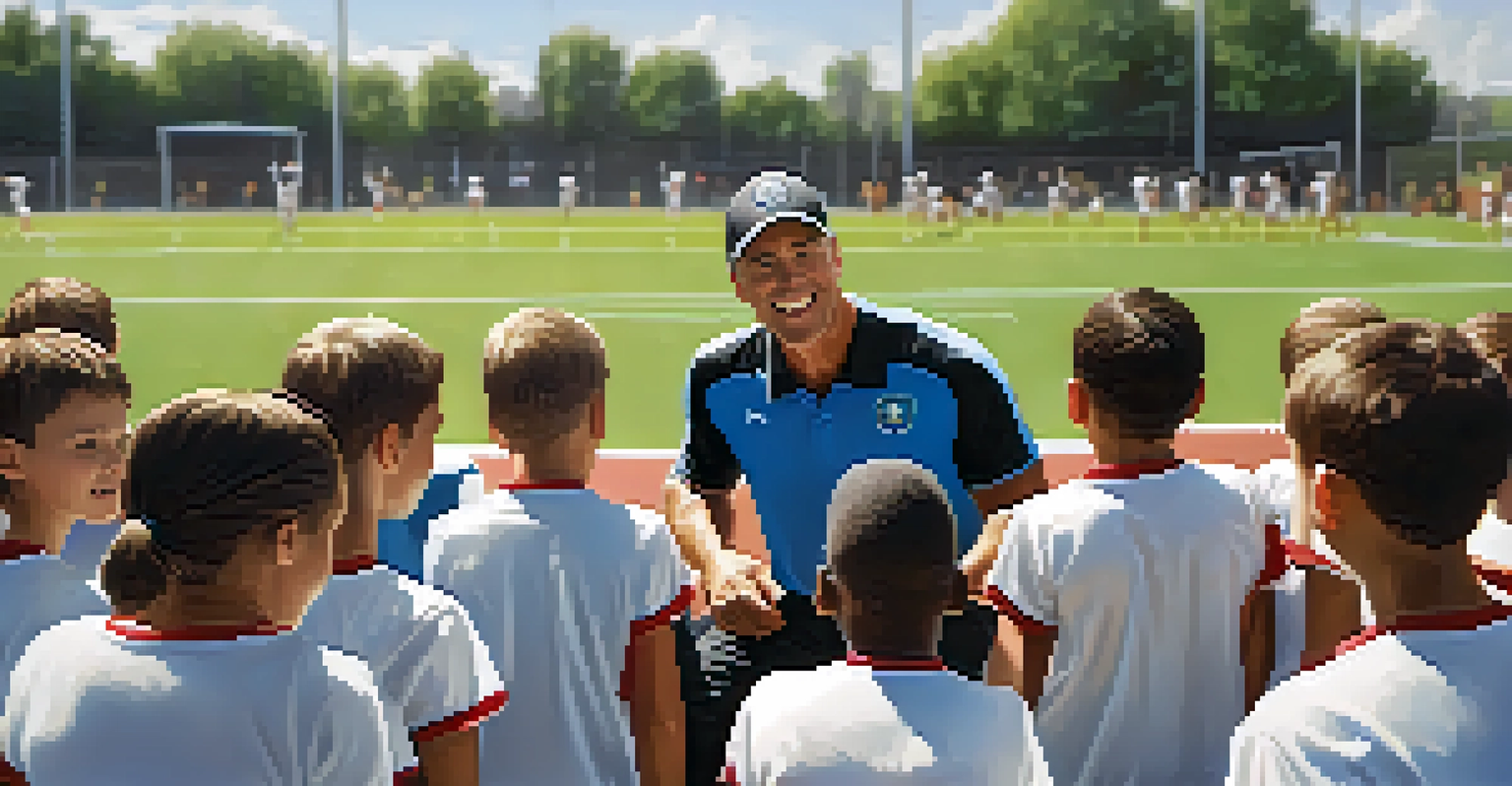Community Engagement Through Youth Sports in Salt Lake City

The Importance of Youth Sports in Community Building
Youth sports play a crucial role in fostering community bonds. They provide a platform for kids to come together, learn teamwork, and develop friendships that often extend beyond the playing field. In Salt Lake City, these sports programs not only focus on physical fitness but also on instilling values like respect and discipline.
Sports do not build character. They reveal it.
Moreover, participation in youth sports can enhance a child’s sense of belonging. When children engage in team activities, they feel connected to their peers, coaches, and their larger community. This sense of belonging is essential for their emotional and social development.
Ultimately, youth sports serve as a microcosm of the community, reflecting its values and aspirations. As kids learn to work together, they also learn to appreciate diversity, fostering a more inclusive environment for everyone involved.
Salt Lake City’s Diverse Youth Sports Programs
Salt Lake City boasts a wide array of youth sports programs catering to various interests and skill levels. From soccer and basketball to less traditional sports like ultimate frisbee, there’s something for every child. This diversity ensures that all kids have the opportunity to participate, regardless of their background or abilities.

These programs often reflect the city's rich cultural tapestry, bringing together kids from different neighborhoods and communities. By participating in a shared activity, they learn about each other’s cultures and backgrounds, promoting understanding and empathy.
Youth Sports Build Community Bonds
Participation in youth sports fosters connections among kids, encouraging teamwork and friendships that enhance emotional and social development.
In addition, local organizations and schools actively collaborate to provide accessible sports options. This partnership not only enhances the quality of the programs but also strengthens community ties as families rally around shared interests.
The Role of Coaches in Community Engagement
Coaches in youth sports are more than just trainers; they are mentors and community leaders. In Salt Lake City, many coaches take on the responsibility of fostering not only athletic skills but also life lessons. They teach kids about perseverance, respect for others, and the importance of community involvement.
The greatness of a community is most accurately measured by the compassionate actions of its members.
These coaches often come from the communities they serve, which helps bridge the gap between sports and local culture. Their understanding of the community’s values enables them to create a more inclusive and supportive environment for young athletes.
Through their dedication, coaches help build strong relationships among players, families, and the wider community. This connection often leads to increased volunteerism and local support for various community initiatives.
Benefits of Community Involvement for Families
When families engage in youth sports, they create shared memories and strengthen their bonds. In Salt Lake City, weekends filled with games and practices become opportunities for families to connect and support one another. This shared experience fosters a sense of unity not just within families, but also across the community.
Additionally, family involvement in youth sports can lead to increased community pride. When families come together to cheer for their children, they become more invested in supporting local teams and events. This pride can extend to other community activities, promoting a culture of engagement.
Diverse Programs Promote Inclusion
Salt Lake City's range of youth sports programs ensures that children from various backgrounds can participate and learn about each other's cultures.
Moreover, these interactions often lead to lasting friendships among parents, creating a network of support that benefits everyone. This sense of community can be particularly vital for families new to the area, helping them feel more at home.
Creating Safe and Inclusive Spaces for All
One of the fundamental aspects of youth sports in Salt Lake City is the commitment to creating safe and inclusive environments. Organizations strive to ensure that all children, regardless of their background or abilities, feel welcome on the field. This inclusive approach helps foster a sense of belonging that is essential for healthy development.
Programs often incorporate adaptive sports, allowing children with disabilities to participate alongside their peers. This not only empowers those children but also educates all participants about diversity and acceptance.
By prioritizing safety and inclusivity, youth sports organizations contribute to a positive community atmosphere. This commitment resonates with families, encouraging them to engage more deeply with local sports programs.
The Impact of Youth Sports on Local Identity
Youth sports can significantly shape a community's identity, influencing how residents view themselves and each other. In Salt Lake City, local teams often become a source of pride, representing not just sportsmanship but also the spirit of the community. Families rally around these teams, creating a shared narrative that strengthens local ties.
Moreover, youth sports events can serve as a platform for showcasing local culture and heritage. From team jerseys to community celebrations, these activities highlight the unique characteristics of Salt Lake City, fostering a sense of pride among residents.
Coaches as Community Leaders
Coaches in youth sports serve as mentors, teaching life skills and fostering strong relationships within the community.
As children grow up participating in these sports, they carry forward the values and connections they've built. This continuity helps maintain a strong community identity, encouraging future generations to remain engaged and active.
Future of Community Engagement Through Sports in Salt Lake City
Looking ahead, the future of community engagement through youth sports in Salt Lake City appears promising. Continued investment in sports programs and facilities can ensure that these opportunities remain available for all children. With a focus on inclusivity and accessibility, we can expect to see even more families getting involved.
Moreover, technology can play a role in enhancing community engagement. Online platforms for scheduling and communication can help streamline participation, making it easier for families to stay connected and involved.

As local organizations adapt to changing needs and preferences, the spirit of community engagement through youth sports will likely flourish. This evolution will not only benefit the children involved but also strengthen the fabric of Salt Lake City as a whole.